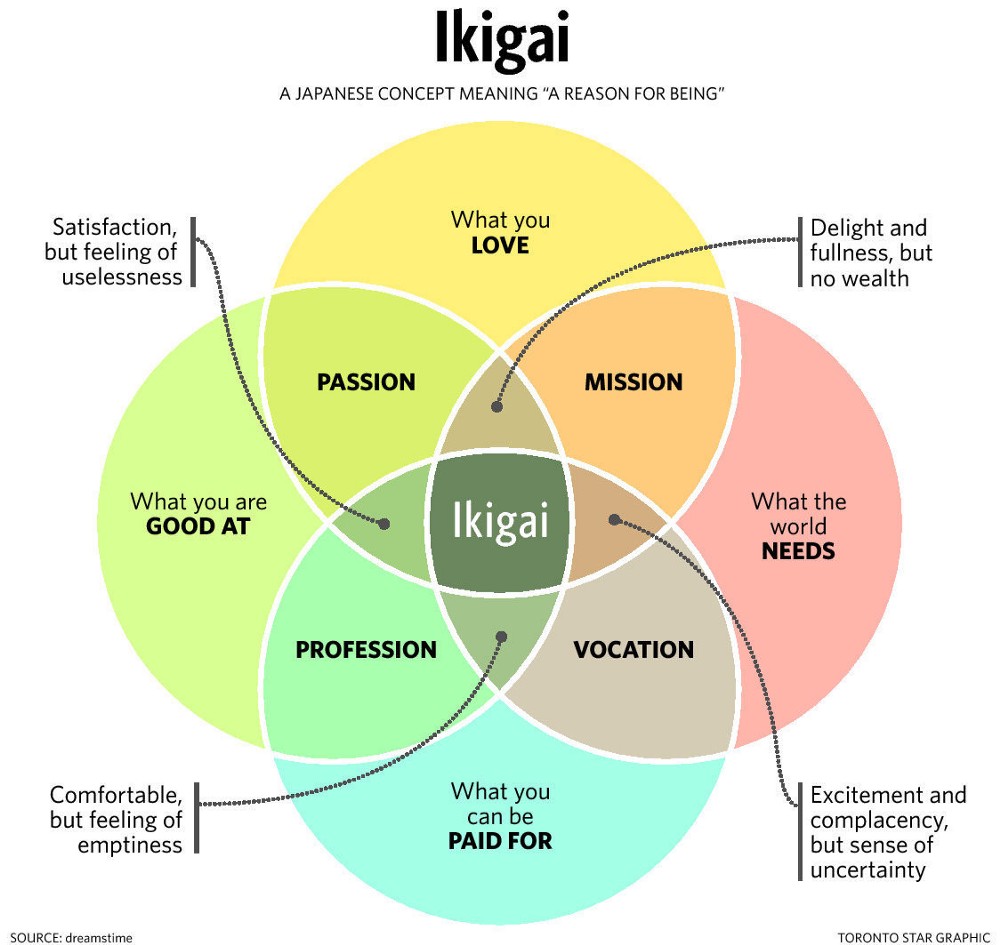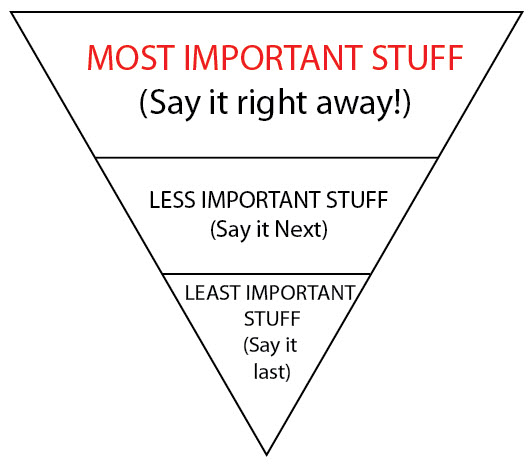
Is writing for an online audience similar to writing for offline readers? How do you craft digital copy that attracts attention, sustains interest, and triggers action?
In this article, you will learn how to write better content across different digital channels to build your personal brand.
Why is this important?
Well, creating a strong online presence can help you to stand out from your peers.
It may possibly also help you to find fresh opportunities. Or to pivot to an exciting—and refreshingly new—livelihood.
To make it useful for you, I’ve divided the guide into the following sections:
- How to set your digital content goal
- Identifying your online audience
- How to choose the right niches
- How to choose the right channels
- Best practices in writing a blog article
- Best practices in crafting a Facebook post
- Best practices in posting on Instagram
- Best practices for writing on Twitter
- Best practices in writing on LinkedIn
- Developing a personal content calendar
Ready to rock the digital world? Let’s go!
#1 Set Your Online Content Goal
The first step you need to consider is your online goal. Ask yourself the following questions:
- What is my short, medium and long-term goal for producing content online?
- How do I wish to brand myself online? What is my unique niche—the space that I wish to be known for?
- What is my measure of success? It is based on securing fresh job opportunities? Or getting invitations to speak? Or just raising my personal profile?
- What are the online metrics that I will use to determine the success of my digital writing efforts? For individuals, this could be awareness (views, users, reach and impressions), engagement (likes, comments, shares and clicks) to conversion (private messages, meet-up sessions, telephone calls) and loyalty (increase in no of friends and fans).
You can learn more about social media ROI here.
#2 Identify Your Online Audience
Once you’ve determined why you are creating content online, your next step is to determine who you’re writing, filming, photographing and sharing content for.
In defining who your online audiences are, it is useful to ask yourself the following questions:
- Who are the people that you hope to reach? What are their demographics like, ie age, gender, location, family size, housing, income, and occupation
- What are their interests, attitudes, lifestyles and behaviours like? Are there influencers and thought leaders whom they follow? What about the movies that they watch, brands that they use, and magazines (or webazines) that they read?
- How can your content be relevant (and more importantly useful) to them?
- Why would they like, trust, believe in, and follow you?
#3 Focus on the Right Content Niche
When considering who you should focus your energies on, consider the principle of “niches for riches.” In other words, try to be as narrow in your content focus as possible.
Here it is useful to do some preliminary research to assess what the competition is like, and how you can differentiate yourself from the others.
For example, merely positioning yourself as an “wellness specialist” may be far too broad a category. It would be better if you can narrow it down, for example by focusing on a specific audience segment or a specific section in wellness. Hence, you could be a “wellness specialist in middle-age men” or “health advisor for teenaged girls.”
Beyond finding a less crowded and more specialised area to focus on, consider too if this is something that is aligned to your personal branding. Here, I’d like to draw your attention to the philosophy of ikigai and the four dimensions that it focuses on:
- What You Love: This the thing that you delight in doing each and every day.
- What The World Needs: This would be the mission that you can fulfill.
- What You Can Be Paid For: This would be what your potential clients/ customers would pay money for.
- What You Are Good At: This would be where your Strengths comes in.

Courtesy of Toronto Star
#4 Choose the Right Digital Channels
In choosing the right social media and digital channels to publish your content in, you should ask yourself the following questions:
- Where are my target audiences likely to be hanging out in?
- What content types would work best for them? Will they be interested in reading long-form articles? Watching short bite-sized videos? Perusing pretty pictures?
- How will their purpose on these channels match my own content goals?
There are many different channels to choose from here. Let me dive into some of the unique characteristics for each:
- A Website/blog will help you to stand out significantly from your peers. Focused on your specific topic and niche, you can take advantage of both Search Engine Optimization (SEO) and social sharing. While you do need some basic technical knowledge to start one, the availability of DIY website builders like Wix, Weebly and other platforms make them easy to do.
- YouTube has morphed from being a social network to becoming an online video repository of sorts. It is also the second largest search engine on the Web, and hence the use of well-written descriptions and keywords become key. You can also benefit from having subscribers to your video channel, and position yourself as an expert.
- Facebook is still the largest and most important social network out there. Due to its recent changes to the News Feed, conversation triggering content may work better here. Avoid click baiting or engagement baiting tactics. Videos are still cool here, and if you can, try to go Live.
- Instagram has grow tremendously in the last few years, and is now an important visual social channel to reach PMETs, young adults and youths. A key development here is the introduction of Stories, which are real-time video and photo updates. Content which works well here are photos and short videos.
- LinkedIn is the most important social network for professionals, especially those in the management and technology fields. It is also well regarded by CEOs and senior managers. Text seems to be better here, especially those with a business storytelling angle.
- Twitter is still around. It recently allowed more characters (up to 280 characters) and its “What’s Trending” feature is useful to ascertain what’s hot. Like Instagram, #hashtags are important here. Tweets with images and short videos work well here.
- SnapChat was the original “Stories” app until it got supplanted by Instagram (and now Facebook too) with their own versions.
- TikTok is great if you are hoping to hit the teenagers and youths. Each video is now a whopping 60 seconds in length. Whimsical and musical content works better here, especially videos with a lot of animated movements (and a fancy soundtrack).
- Pinterest is also known as “social candy” in view of its preference for beautiful designs and images. Over 2/3rds of Pinterest regulars are females. Increasingly, Pinterest has also become an important e-commerce channel.
- Telegram/ WeChat/ WhatsApp are instant messaging platforms where you can form groups focused on a specific community, special interest group or topic. (subscribe to Cooler Insights’ Telegram channel here.)
#5 Best Practices in Writing an Article/ Blog
Now that you’ve done the hard work of choosing which channels to focus on, I will now cover digital writing tips for the most popular channels.
The first channel we will focus on are websites or blogs, and how you can craft articles for them. Here are some of the best practices to consider:
How to Get Content Ideas
Here are some of my favourite ways to be inspired with the right article ideas:
- Surf Quora and type your topic of interest in there. What are the questions which come out? Write an article to answer that!
- Use a search keyword tool like Ubersuggest, Keyword Tool, or SEMRush to come up with possible topics of interest. Choose less competitive keywords that have a decent search volume per month.
- Check out Google Trends to see what the most popular trending topics are. Write an article based on that topic.
- Talk to your friends, colleagues, or acquaintances about your topic of interest. Tell them that you’re writing an article and ask them for ideas!
Formatting of Article
Here it is useful to follow the inverted pyramid format, where you place the most important information upfront, followed by the next most important information and so on.

Beyond this, you should also consider these elements of formatting:
- Headlines: These are the most important aspects of any article. Write it last, and prepare to spend up to 80 percent of your time doing so.
- Lead ins/ Ledes: This is the first paragraph in your copy. Make it punchy. Make it a question that your reader wants answered. Or quote a statistic or amazing fact.
- Subheadings: Include subheadings for your article so that it is easier to parse—especially on a mobile phone (where most people would read from).
- Conversational Tone: Write like how you speak. However, don’t babble!
- Call To Action: Have an ending to your article that brings them to the next stage of their journey with you. Where do you want them to go?
Length of Article
This has been a topic of much debate.
While shorter and more succinct pieces may work well for an easily distracted audience, longer in-depth pieces (like this one here) may rank better on search.
I try to aim for at least 1,000 to 1,500 words per article, and I find that it has worked well for me. To make it less laborious to read, use bullet points, subheadings, images and videos to break the wall-of-text.
(Learn more about how you can blog to make money here.)
#6 How to Write Winning Facebook Posts
You may be active on Facebook sharing photos of your food, your kids, or your cat. However, few users are aware of how they can use this mother of all social networks to build their professional brand.
There are a couple of tips here that you can consider:
- Write short and long: Vary the length of your posts, depending on how much information you wish to share. However, don’t babble (haven’t you seen that before?).
- Try videos: Record yourself sharing a useful piece of advice. Keep it short—1 to 2 minutes work best—and remember to write a script first.
- Choose photos with people: Of all the image types that work on Facebook, people images tend to perform the best. Use these as a point of reference when you craft a piece of content.
- Ride on trends: Facebook posts which work well tend to be those that are plugged into the news.
- Mix business with pleasure: Write like you would to a friend, but include useful tips and insights relevant to your trade.
- Consistency with a twist: Positioning yourself as an expert and “go-to” person in a specific domain necessitates a consistent content strategy. However, you should also not be afraid to surprise your followers by offering an insight or a witty quip.
#7 Crafting Impactful Instagram Content
Now, unlike Facebook and blogs, the copy in Instagram usually plays second fiddle to your photo or video. Thus, if you’re not able to shoot an interesting photo or video or design an intriguing graphic, you probably should not expect Instagram to work wonders for you.
Having said that, there are some creative ways to use Instagram to build your online brand.
Thematic Day-in-the-Life Posts
Use Instagram to show what you do either at work, in school or during social settings. However, keep it thematic and relevant to what you are trying to position yourself as.
Thus, if you want to be known as a small-business accounting specialist, you could snap a photo of yourself hard at work at your client’s place (with their permission of course).
Share Helpful Snippets on Stories
Use the Stories feature on Instagram to provide short bite-sized tips. You can make use of the text overlay feature to craft one or two liners as takeaways, and then talk to the camera as you record.
Keep Copy Short and Use as a Teaser
Instagram isn’t a place to write a long article—that is what a blog is for. Hence, you should craft your post like a teaser to attract them to your website or your YouTube channel to consume the longer and more comprehensive piece.
Use #Hashtags Sparingly
Hashtags (and location tags) are commonly used to find posts on Instagram. Choose a consistent hashtag to represent your brand (eg #coolerinsights in our case), as well as those that are relevant to your area of specialisation.
Use this tool to generate the right hashtags for your use, or follow what influencers use.
#8 How to Tweet Terrifically
With 280 characters per tweet, plus the ability to attach videos and images, Twitter has evolved quite significantly.
As an individual seeking to build your online brand, you can use Twitter to follow influencers and see what’s trending using tools like trends24.
Invite your offline friends to follow you on Twitter. Seek to build a personal brand focused on tweeting content revolving around your subject matter of expertise.
Rather than just share what you’ve come across, add a couple of words to provide your own perspective. Like Instagram, hashtags also work on Twitter—keep to just one or two #hashtags here.
Oh yes, don’t forget to retweet and favourite/like the content of Twitter influencers. This helps you to get noticed by them and builds goodwill.
#9 How to Write for LinkedIn
LinkedIn is the secret weapon that many people have access to, but few use well. While it stills works well as a place for job seekers and talent finders to converge, the professional social network is also invaluable for those seeking to build their personal brand.
Polish Your LinkedIn Profile
As I’ve previously written, you should first focus on your LinkedIn profile. Update your photo to a professional looking one, and craft your USPs in your LinkedIn headline.
Review your Summary (ie the “About” section) and find ways to write about your career and business achievements in an easy to digest yet upbeat manner. Depending on your preference, you can write about yourself in the 3rd person (“Armed with 25 years of senior management experience, Walter is a ……”) or you can choose the active and direct method.
(Have a look at my LinkedIn profile to see which I chose.)
Content ideas that work (and don’t)
You probably know that LinkedIn isn’t the place to share your baby photos, a comical skit, or the latest viral video sensation. However, do you know that LinkedIn works exceptionally well for stories?
The type of stories that you can craft here include:
- Sharing an episode in your professional life where you overcame a difficulty
- Narrating how your customer have benefited from what you’ve provided them with
- Relating words of wisdom from a former boss or mentor
- Using your own personal experience—both successes and more importantly failures—to share useful lessons at work or in life
Beyond this, consider providing useful tips that a mostly PMET crowd could benefit from. They may include leadership and management insights, productivity tips, or hacks that you’ve used.
#10 Develop a Personal Content Schedule
Finally, you need to put everything together into a calendar or a content schedule. This is important—whatever gets into your calendar gets done after all.
There are a couple of things you can do to regulate and systematize your online content work:
- Book Your Calendar: Fix your time to create content and make it a regular part of your day, week and month
- Organise along Themes: Develop a couple of core themes that you can craft your content on. If you wish, you can write them down somewhere as a reminder and a nudge.
- Consume Good Content: Read, watch videos, or listen to quality content providers who are the masters in your field.
- Participate and Engage: The Law of Reciprocity is one that works exceedingly well online. Join Facebook Groups or LinkedIn Groups, and actively comment on the posts of others. You may also wish to subscribe to email newsletters to get an idea of what influencers in your space are sharing.
- Make it a Ritual: Turn online content production into a lifestyle habit. This does not mean that you need to blog or post everyday. However, it does mean that you dedicate time and energy to crafting online content on a regular basis.
Conclusion
What I’ve covered above is just the tip of the digital writing ice-berg. There are a lot more that you can learn.
A good place to start is this website/blog. Peruse our archived posts on content writing and copywriting to catch a glimpse of what you can do.
Do also consider subscribing to us—you’ll receive an email direct in your inbox on the latest articles here.

Keep it up!